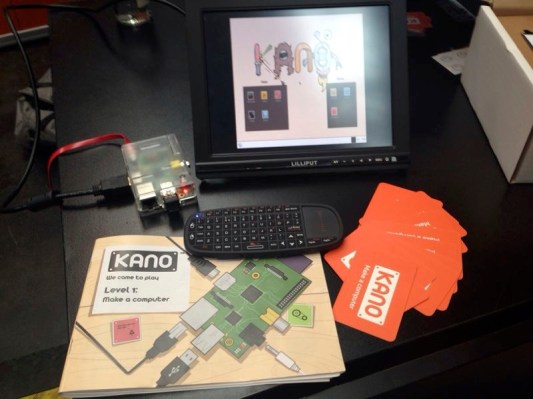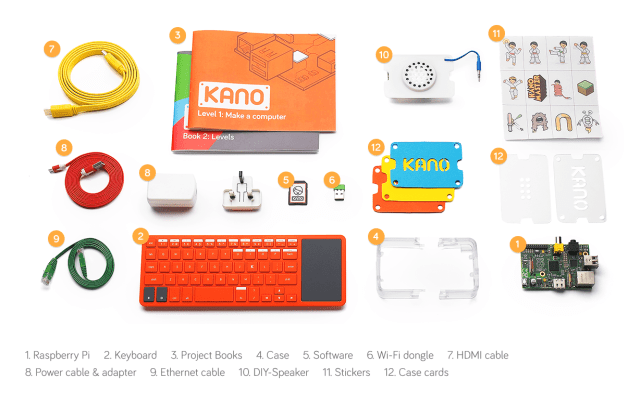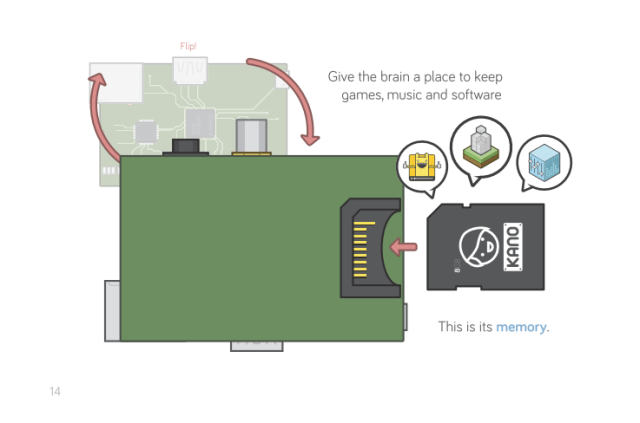In the late 1980s a select group of British teens were given (or saved up their pocket money to buy) a small, rubber-keyed home PC called the Sinclair ZX Spectrum. My brother was one of them. And that little box, with its blank canvas start screen that prompted you to try out a few lines of code (Spectrum Basic), set him on the road to becoming a fully fledged programmer.
Fast forward to today, and the machines kids get to play with — the iPads and iPod Touches — don’t actively encouraging that sort of computing. They’re slick, sealed boxes, with UIs that deliberately conceal complexity so they can wow with effortless capability. They’re designed to please (to ‘delight’ in Applespeak), not to make you curious. And that’s an important difference.
The disconnect between the creative platforms of the past, and the slick, hermetically sealed boxes of today was the trigger for the U.K.-made Raspberry Pi microcomputer to be created by a group of Cambridge engineers. And just yesterday the Pi Foundation announced it has shipped its two millionth board.
It’s also the impetus behind a new platform, part-inspired by and built on top of the Pi, called Kano (pictured above, and in kit form below). What exactly is Kano? It’s a build-it-yourself computer launching today on Kickstarter with the aim of pulling in $100,000 in crowdbacking to get 1,000 of its Kano kits to market by summer 2014.
The kits are the whole computing kit & kaboodle: an “end-to-end computer”, costing $99, which deliberately arrives in pieces so the curious can put it together, helped along by Kano’s easy to understand guidebooks, and then use the machine they’ve assembled to start sticking bits of code together and building virtual stuff.
“The initial idea was let’s create a simple, fun, step-by-step computer kit that anyone can use to bring a computer to life and start hacking up games, and start really feeling that sense of possibility… rather than intimidation,” co-founder Alex Klein tells TechCrunch.
“The original inspiration was my seven-year-old cousin, Micah, trying to set up a computer and trying to make the Raspberry Pi — and finding that the For Dummies guide was 400 pages long in this little tiny font, and saying ‘what do we do now?’.”
Kano’s founders decided there had to be a more user-friendly way to get kids cutting their coding teeth and so they came up with the idea of combining a DIY computer kit with easy to read guidebooks and plug-and-play coding software. The basic idea is to add an accessibility layer on top of the Raspberry Pi to lower the barrier to entry for hacking around with an open computing platform (even as it ups the cost a little).
The hardware heart of Kano is the Raspberry Pi microcomputer but unlike when you order a Pi, Kano comes with all the bits and bobs needed to turn the board into a programmable computer, namely: “Keyboard, SD card, makeable casing, case mods, an operating system, tons of games and levels, a DIY speaker, and Level books with dozens of hours of projects”.
Kano is not just repackaging Pi hardware; it’s also building its own software to go with it, including an operating system, Kano OS — built on top of Debian Linux (using the Debian Wheezy distro) — and a Scratch-esque visual coding environment called Kano Blocks that will let the user plug and play with graphical blocks to pull together lines of code.
This plug-and-play, trial-and-error software learning environment will also allow them to see lines of code being generated as they stick various components together, and view the resulting program in action.
Here’s a couple of videos of Kano Blocks in (sped up) action — showing how you can hack together a game of Pong, and generate massive Minecraft constructions:
“Kano OS is still a work in progress. We’re pre-alpha, and we’re hoping that our Kickstarter backers will get the alpha release, and they’ll get to test it. But we’re really excited about Kano OS because it’s based on Debian Linux… but it provides not only a front end experience that is more intuitive, more familiar to a generation raised on mobile and console games,” says Alex.
“At the same time we’ve done amazing stuff on the back end as well. So we’ve fixed dozens of known issues with Linux and the Raspberry Pi. We’ve done a seamless wireless auto configuration. We’ve made sure that the image is lean — less than 1GB. The image auto-expands to the partition so that you don’t have to worry about plugging it into your computer, burning an image.”
The original idea for the Raspberry Pi was to get more U.K. kids coding, but it’s fair to say that adoption has been strongest among the already tech savvy maker/hacker community. Likely because Pi is deliberately difficult — so if you’re an absolute beginner there’s a big hurdle to overcome to start being able to use it.
The Pi Foundation wanted a certain degree of difficulty so that users would have to stretch themselves to explore and figure stuff out. But they set the bar pretty high — which means there’s room for more accessible platforms, such as Kano, to sit on top of Pi and make it even easier to play with.
“In terms of Raspberry Pi, we love working with the board, and we share the same social goals as the Foundation,” says Alex. “And we really want to get as many of these kits out there as possible — the more Raspberry Pis and the more Kano kits out there in the wild, we think, the more kids are going to get excited about technology, instead of just consuming, consuming, consuming. Flipping through Instagram, downloading Angry Birds… I don’t mean to disparage any of these companies or products, because they’re brilliant, and it’s not as if our cell phones are broken; they’re magical. We need them.
“But at the same time if we have in our right hand the iPhone — a powerful device for consuming media, for communicating, and for any of the things these wonderful, closed, hermetically sealed screens can do — and then in our left hand we have something that is our own; that takes nothing for granted, that builds you up and makes you feel confident in altering technology — rather than just using it.”
“The example of Raspberry Pi shows, pretty unambiguously, there is a hunger for a kind of control and accessibility to computing that people didn’t really expect,” he adds.
Asked about Kano, Raspberry Pi founder Eben Upton told TechCrunch: “I think there’s value to platforms like Kano (Fuze would be another great example) which add some combination of hardware, software, peripherals and documentation to the Pi to make it more appealing to particular groups of users who are underserved by the standard offering.
“I’ve seen early versions of the Kano software environment, and I think Alex and the team are doing great work making the Pi more accessible to a younger audience.”
Upton also suggested the Pi Foundation has plans to move in this direction itself, in future. “Over time, Raspberry Pi will likely move in the direction of a more consumer-friendly offering, but there will always be a space for this sort of value-added offering,” he added.
Another difference of emphasis between Kano and Raspberry Pi is that Kano is starting with the idea of serving a global and emerging market need, rather than fixing a local developed world problem. Of course, although Pi started as a U.K. project, it quickly branched out beyond that — as hacker/maker community adoption generated broader momentum.
But Kano is hoping to target a broader geographical base right from the start, with English, Spanish, Arabic and Mandarin versions of its kit’s guidebooks planned in time for launch. It’s also working on adding more languages, including Hindi, says Alex.
“The computing platforms of the future are going to be shaped by the computing populous of the future and those people are predominantly going to live in places like Johannesburg and Freetown, Sierra Leone, and Delhi and Pune, and those people, we think — and if you look at the data it seems to bear out — that they’re looking for things that are affordable, hackable and open source. Free software that they can modify,” he adds.
“So there’s a huge untapped need. All you really need to do is add a layer of simplicity, fun and experience and you can hopefully get tonnes of people interested in open source.”
As well as taking to Kickstarter to raise funding, Kano has taken in seed funding from friends & family to develop the kit over the past year, including some funding from Index Ventures via one of its three co-founders, Saul Klein, who is a partner at the firm.


